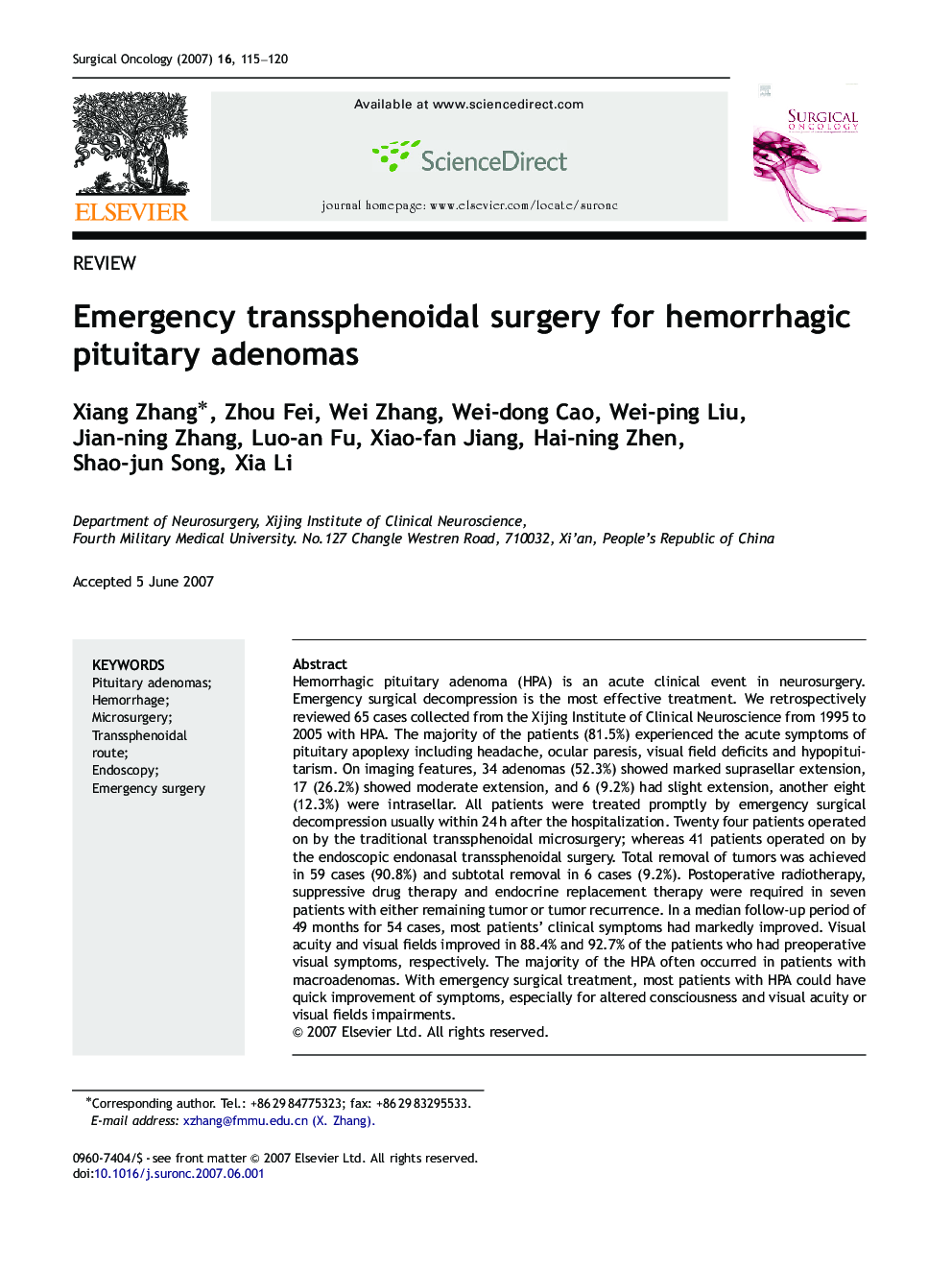| Article ID | Journal | Published Year | Pages | File Type |
|---|---|---|---|---|
| 3998175 | Surgical Oncology | 2007 | 6 Pages |
Hemorrhagic pituitary adenoma (HPA) is an acute clinical event in neurosurgery. Emergency surgical decompression is the most effective treatment. We retrospectively reviewed 65 cases collected from the Xijing Institute of Clinical Neuroscience from 1995 to 2005 with HPA. The majority of the patients (81.5%) experienced the acute symptoms of pituitary apoplexy including headache, ocular paresis, visual field deficits and hypopituitarism. On imaging features, 34 adenomas (52.3%) showed marked suprasellar extension, 17 (26.2%) showed moderate extension, and 6 (9.2%) had slight extension, another eight (12.3%) were intrasellar. All patients were treated promptly by emergency surgical decompression usually within 24 h after the hospitalization. Twenty four patients operated on by the traditional transsphenoidal microsurgery; whereas 41 patients operated on by the endoscopic endonasal transsphenoidal surgery. Total removal of tumors was achieved in 59 cases (90.8%) and subtotal removal in 6 cases (9.2%). Postoperative radiotherapy, suppressive drug therapy and endocrine replacement therapy were required in seven patients with either remaining tumor or tumor recurrence. In a median follow-up period of 49 months for 54 cases, most patients’ clinical symptoms had markedly improved. Visual acuity and visual fields improved in 88.4% and 92.7% of the patients who had preoperative visual symptoms, respectively. The majority of the HPA often occurred in patients with macroadenomas. With emergency surgical treatment, most patients with HPA could have quick improvement of symptoms, especially for altered consciousness and visual acuity or visual fields impairments.
